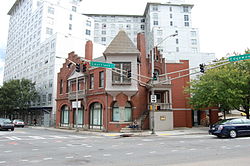
John Stith Pemberton was an American pharmacist and Confederate States Army veteran who is best known as the inventor of Coca-Cola. In May 1886, he developed an early version of a beverage that would later become Coca-Cola, but sold its rights to the drink shortly before his death in 1888.
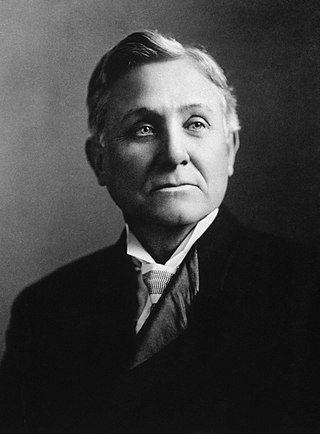
Asa Griggs Candler Sr. was an American business tycoon and politician who in 1888 purchased the Coca-Cola recipe for $238.98 from chemist John Stith Pemberton in Atlanta, Georgia. Candler founded The Coca-Cola Company in 1892 and developed it as a major company.

Five Points is a district of Atlanta, Georgia, United States, the primary reference for the downtown area.

The World of Coca-Cola is a museum located in Atlanta, Georgia, United States, showcasing the history of The Coca-Cola Company. The 20-acre (81,000 m2) complex opened to the public on May 24, 2007, relocating from and replacing the original exhibit, which was founded in 1990 in Underground Atlanta. There are various similar World of Coca-Cola stores in locations such as Las Vegas and Disney Springs.

The Martin Luther King Jr. National Historical Park covers about 35 acres (0.14 km2) and includes several sites in Atlanta, Georgia related to the life and work of civil rights leader Martin Luther King Jr. Within the park is his boyhood home, and Ebenezer Baptist Church — the church where King was baptized and both he and his father, Martin Luther King Sr., were pastors — as well as, the grave site of King, Jr., and his wife, civil rights activist Coretta Scott King.

The Sweet Auburn Historic District is a historic African-American neighborhood along and surrounding Auburn Avenue, east of downtown Atlanta, Georgia, United States. The name Sweet Auburn was coined by John Wesley Dobbs, referring to the "richest Negro street in the world," one of the largest concentrations of African-American businesses in the United States.

Druid Hills Historic District is a historic district in Druid Hills and Atlanta in DeKalb County, Georgia, United States, that is listed on the National Register of Historic Places (NRHP).
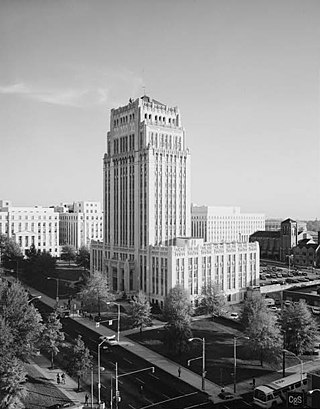
Atlanta City Hall is the headquarters of the City of Atlanta government. It was constructed in 1930, and is located in Downtown Atlanta. It is a high-rise office tower very similar to dozens of other city halls built in the United States during the same time period. Located in South Downtown, it is near other governmental structures, such as the Georgia State Capitol and the Fulton County Courthouse. The Neo-Gothic structure features many architectural details that have helped to make the building a historical landmark. It is Atlanta’s fourth city hall.
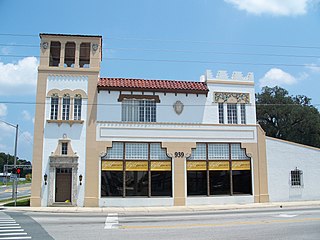
The Coca-Cola Bottling Plant is an historic building located at 939 North Magnolia Avenue in Ocala, Florida, United States. Built in 1939, it was designed by Fort Lauderdale architect Courtney Stewart in the Mission/Spanish Revival style of architecture. On May 4, 1979, it was added to the U.S. National Register of Historic Places. Now owned and operated by Gartner Group, Inc. The building is the site of Grand Pointe Ocala, the cities premier event and conference center.

The Candler Building is a 17-story high-rise at 127 Peachtree Street, NE, in Atlanta, Georgia. When completed in 1906 by Coca-Cola magnate Asa Griggs Candler, it was the tallest building in the city. This location where Houston joins Peachtree Street was the location of one of the earliest churches in the city which was built on land donated by Judge Reuben Cone in the 1840s. It forms the northern border of Woodruff Park.

Meeker's Hardware is located at White Street and Patriot Drive in downtown Danbury, Connecticut, United States, near the city's train station and the Danbury Railway Museum, just outside the city's Main Street Historic District. It was built in 1883, opened in 1885 and remained in the Meeker family until 2013. It was added to the National Register of Historic Places in 1983. It was the only hardware store on the Register. The Classical Revival exterior features a brick face with seven bays and a frieze at the top boasting a central pediment above its cornice. The name of the store is painted on both outside walls and displayed prominently in the front between the two stories. It is complemented by an interior that remains much as it did in the late 19th century. A vintage cash register is still in use. Tools and supplies are stocked in wooden shelves and compartments with thick, unfinished hardwood flooring beneath and high ceilings above, with ceiling fans to cool the building in the summertime.

The Herndon Home is a historic house museum and National Historic Landmark at 587 University Place NW, in Atlanta, Georgia. An elegant Classical Revival mansion with Beaux Arts influences, it was the home of Alonzo Franklin Herndon (1858-1927), a rags-to-riches success story who was born into slavery, but went on to become Atlanta's first black millionaire as founder and head of the Atlanta Life Insurance Company. The house was designed by his wife Adrienne, and was almost entirely built with African-American labor. The house was declared a National Historic Landmark in 2000, and had previously been declared a "landmark building exterior" by the city of Atlanta in 1989.
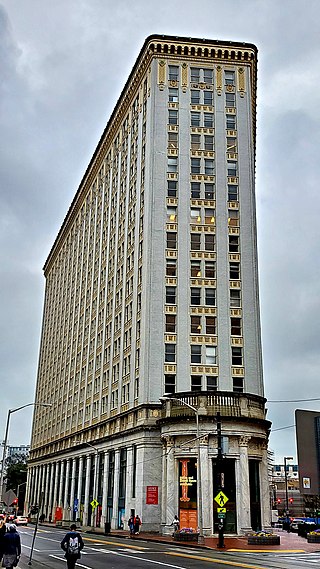
The Hurt Building is an 18-story building located at 50 Hurt Plaza in Atlanta, Georgia with a unique triangular shape. One of the nation's earliest skyscrapers, the Hurt Building was built between 1913 and 1926, and was the initial home for the Federal Reserve Bank of Atlanta. It was renovated in 1985. It was added to the National Register of Historic Places in 1977.

Camak House, at 279 Meigs Street, Athens, Georgia, was built in about 1834 by James Camak and featured in Georgia's early railroad history. An example of Federal architecture, it has a number of features unusual for its period, including a kitchen within the raised basement, and closets. Both main floors have four rooms; the stairwell has a mahogany railing, and moldings and trim were made using a Greek key pattern. After long service as a family home, it was used as a Masonic Lodge before being bought by Coca-Cola Enterprises. In 1975 Camak House was listed on the National Register of Historic Places, but the building had by then fallen into disrepair. It was restored and used as the offices of a law firm. As of December 2011, it is for sale.

Francis Palmer Smith was an architect active in Atlanta and elsewhere in the Southeastern United States. He was the director of the Georgia Tech College of Architecture from 1909–1922.

Joseph Augustus Biedenharn was an American businessman and confectioner credited in the summer of 1894 with having first bottled the soda fountain drink, Coca-Cola, at his wholesale candy company building in Vicksburg, Mississippi. As he expanded this business, he created a model of bottling-distributor franchises and built his company through this state, as well as Louisiana and Texas.

The Tifton Residential Historic District, in Tifton, Georgia, is a historic district which was listed on the National Register of Historic Places in 2008.

The Coca-Cola Syrup Plant is a former industrial building in St. Louis, Missouri that made soft drink concentrate for the Coca-Cola company. The National Register of Historic Places listed the structure which has since been converted to the residential Temtor Lofts.
